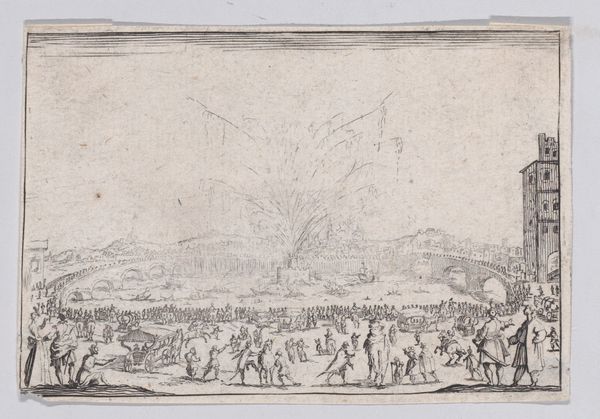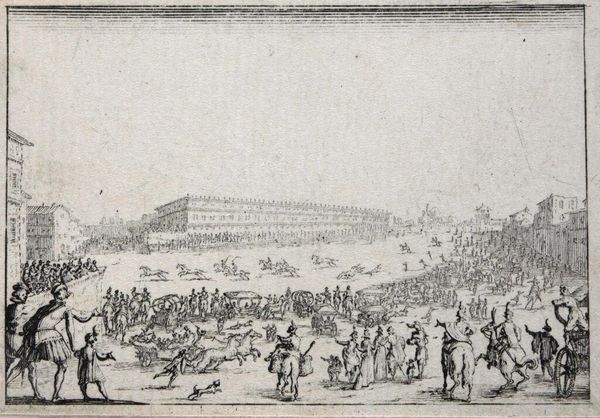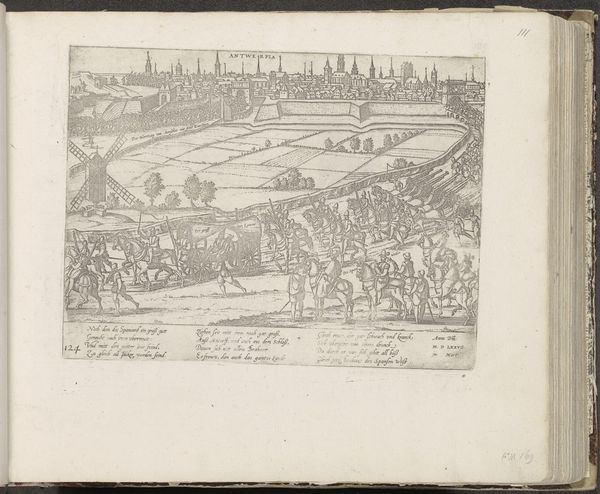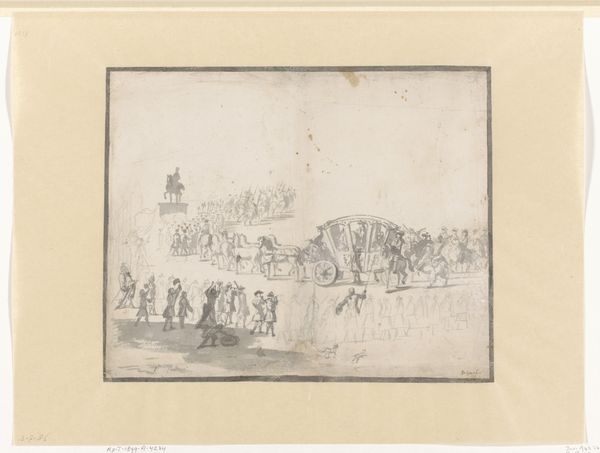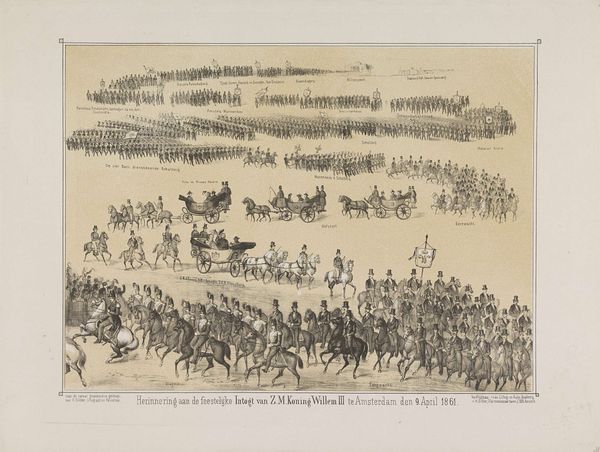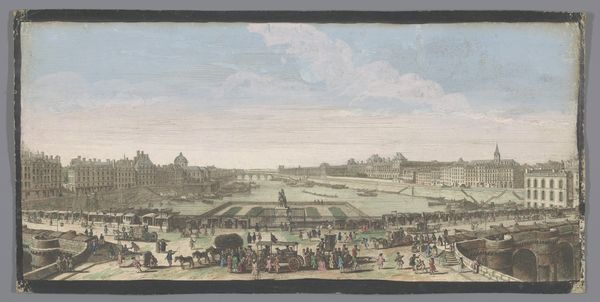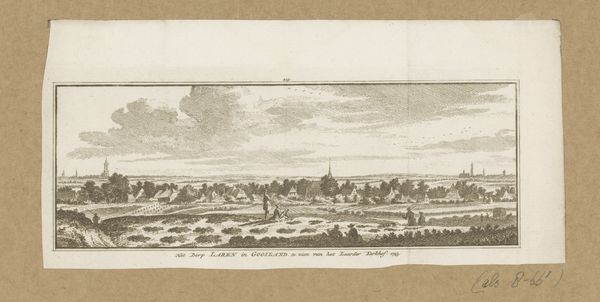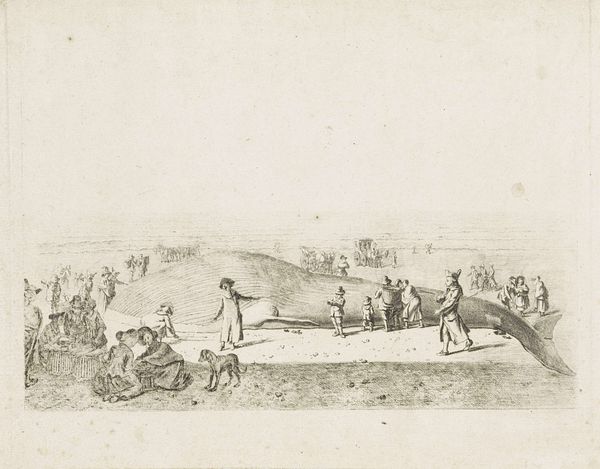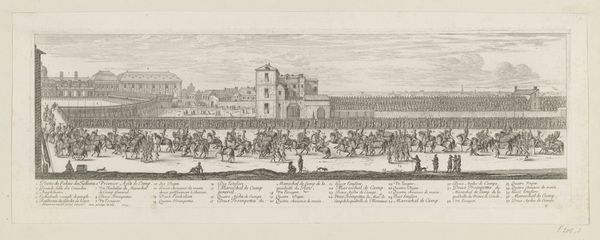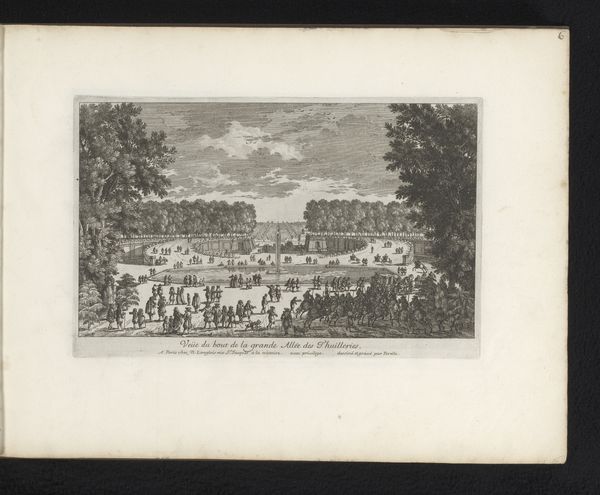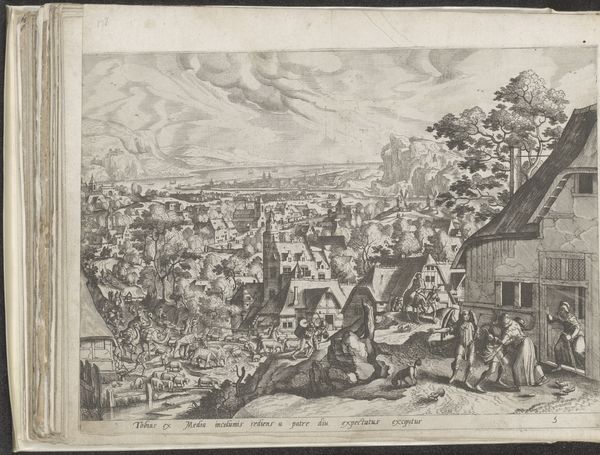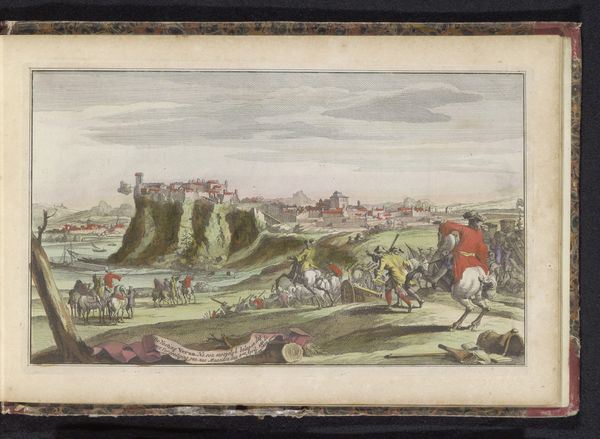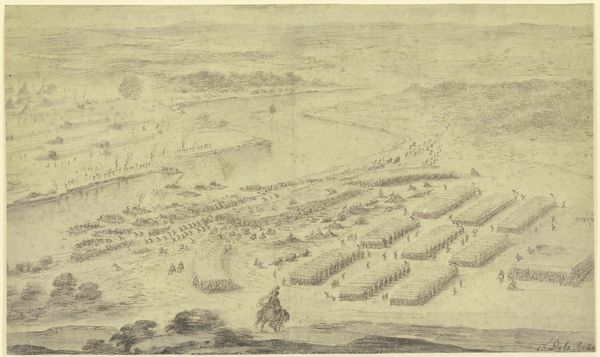
Reverse Copy of La Course de Chevaux sur la Place Pitti a Florence (The Horse Race at the Piazza Pitti in Florence), from "Les Caprices", Series A, The Florence Set 1620 - 1700
0:00
0:00
drawing, print, engraving
#
drawing
#
baroque
# print
#
cityscape
#
genre-painting
#
engraving
Dimensions: Sheet: 2 1/8 x 3 1/8 in. (5.4 x 7.9 cm)
Copyright: Public Domain
Curator: Today, we're examining a piece called "Reverse Copy of La Course de Chevaux sur la Place Pitti a Florence (The Horse Race at the Piazza Pitti in Florence), from "Les Caprices", Series A, The Florence Set," dating from 1620 to 1700. It's an anonymous engraving currently residing at the Metropolitan Museum of Art. Editor: My immediate impression is one of chaos elegantly rendered. There's a frenzy in the lines, yet the overall composition remains quite balanced. The contrast is interesting too, with the busy foreground against the relative openness of the sky. Curator: It's a fascinating glimpse into the spectacles that defined baroque society. Consider the symbolism of the horse race itself, representing power, virility, and the unpredictable nature of fortune. Editor: And the placement of Piazza Pitti, wasn't that area historically linked to grand duchy governance, particularly under the Medici family? Wouldn’t this image speak to their legacy, this controlled "game" echoing themes of competition? Curator: Precisely! And in genre painting, horse races depicted within cityscapes symbolized more than just sporting events. Think about what it also meant: a theatre of power and a highly visible display of civic pride, a perfect intersection of public and private identities in that historical and geographical location. Editor: Note how the engraver, despite being unknown, captured such energy using the meticulous medium of engraving! The technique lends itself to clean lines and detailed surfaces. Look at how effectively shading gives dimension, really adding depth to the flat surface, but doesn’t that crowded effect create tension? Curator: Yes, that tension becomes a defining element! What you see expressed is Baroque extravagance – from its subject, an outdoor celebration, to its medium itself, detailed drawing – both mirror Baroque dynamism. Editor: Thinking about the artist’s probable intention through the iconographical elements, it almost certainly served the purpose of recording for posterity not just what horse races actually looked like, but what that symbolism actually implied at the time. Curator: Ultimately, "Reverse Copy of La Course de Chevaux" uses structure and design, its details and precision to convey a complex social event and convey deep symbolism of Florentine culture. Editor: Exactly! Considering what its forms actually show and signify, we’re rewarded in deciphering cultural clues locked within the work’s frame.
Comments
No comments
Be the first to comment and join the conversation on the ultimate creative platform.
